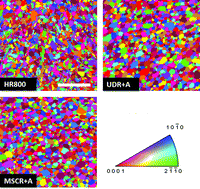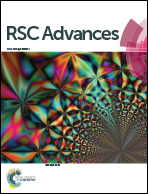The importance of crystallographic texture in the use of titanium as an orthopedic biomaterial†
Abstract
Crystallographic texture is perceived to play an important role in controlling material properties. However, the influence of texture in modulating the properties of biomedical materials has not been well investigated. In this work, commercially pure titanium (cp-Ti) was processed through six different routes to generate a variety of textures. The effect of texture on mechanical properties, corrosion behavior, cell proliferation and osteogenesis was characterized for potential use in orthopedic applications. The presence of closely packed, low-energy crystallographic planes at the material surface was influenced by the volume fraction of the components in the overall texture, thereby influencing surface energy and corrosion behavior. Texture modulated osteoblast proliferation through variations in surface water wettability. It also affected mineralization by possibly influencing the coherency between the substrate and calcium phosphate deposits. This study demonstrates that crystallographic texture can be an important tool in improving the properties of biomaterials to achieve the enhanced performance of biomedical implants.


 Please wait while we load your content...
Please wait while we load your content...